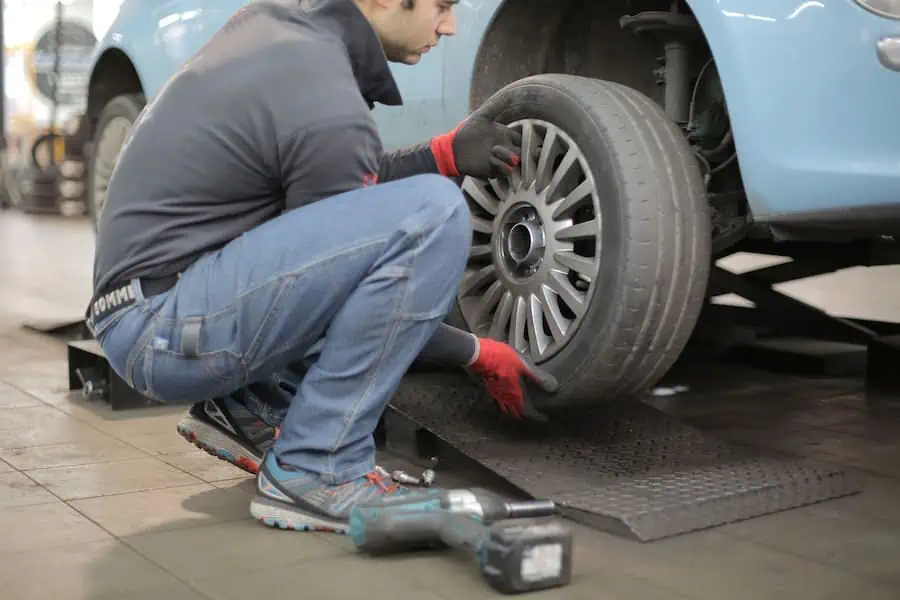
Regular car maintenance is essential to keep your vehicle running smoothly and safely. However, many car owners neglect routine maintenance tasks, leading to costly repairs and accidents. By staying on top of your car’s maintenance needs, you can extend its lifespan, improve its performance, and ensure your safety on the road.
In this article, we’ll explore six essential tips for routine car maintenance, including simple tasks you can do at home and more complex procedures best left to professionals. These tips can keep your car in shape and help you avoid costly repairs.
1. Do The Emission Inspections
Emission inspections are commonly done depending on your state. In most cases, you must pass emission inspections.
Proper car maintenance can help you pass these inspections, but if it doesn’t go through, you must know how you failed and that something must be fixed to complete the assessment. Emission inspections should be done every year with the help of the local motor vehicle department, according to the requirements of your country. To ensure you pass these inspections, secure a collection of redline emission products to preserve your vehicle’s engine while driving cleaner.
2. Change The Oils
Never miss an oil change, depending on the oil your car needs. You must change your oil every 300–10,000 miles. Failure to change the oil frequently can lead to increased costs for car maintenance. It’s good to understand that dirty oils can cause serious damage, like engine failure. If the engine fails, you will need a lot of money to fix the problem. Therefore, an oil change is vital to keeping your vehicle running well.
If you are still deciding which oil to use for your vehicle, it’s advisable to refer to your owner’s manual or contact your car dealer.
It’s also good to check the oil levels to ensure there is enough. Use the owner’s manual to learn about the recommended oil levels. Turn off the engine and open the hood to look at your oil. To add oil, twist off the cap and remember to wipe any drips off the engine to avoid the smoke that occurs when oil heats.
3. Check Your Tire Pressure
You must check your tire pressure regularly. Frequent checking enhances your safety as well as your general maintenance. Your car must have tire pressure sensors or TPMS. If your vehicle doesn’t have a tire pressure sensor, you can invest a few bucks in a tire gauge. Correct tire pressure prevents the tire from tearing and wearing and aids in improving fuel efficiency. Proper tire pressure will also assist you in knowing if your car is well aligned.
You need to know that tire pressure determines the wear and tear of a car’s tires. Also, it’s crucial to have a spare tire. Ensure it’s also a good tire pressure since it can be frustrating to discover it’s flat when needed. For instance, if your tires go flat in the middle of your journey, and it happens that the spare part is also flat, you can be confused, especially if no air pump is near you. You need to test the air pressure of your driving tires and spare tires at least once a month.
4. Change Your Filters
The filters in your vehicle eliminate dirt from your engine, gas, and the air you breathe in. Therefore, you must change them when they get dirty, as they can affect the engine’s running. Also, prolonged use of old air filters can lead to complicated air conditioning system issues.
Debris and air contaminants can lead to clogged air filters, decreasing gas mileage and horsepower and making your engine stall. It prevents proper airflow around the engine. Consider changing your air filters annually or after 12,000 miles.
5. Have Your Tires Rotated
You should know the rate at which the front and back tires wear differently. That’s because they carry different weights and loads on different cars. To ensure they tear evenly, ensure that you position your tires whenever you change oils.
Rotating your tires helps to prolong the service life of your tires by maintaining the balance of tread wear, thus reducing noise and vibration issues. Following the tire’s rotation instructions in the owner’s manual is also recommended. Ensure that your vehicle’s tires are rotated every 5,000–8,000 miles. Rotating your tires can help them last longer, enabling you to drive well.
6. Inspect Your Car
Inspect your car every day to determine its condition. Regular checking of your vehicle helps you detect any exterior issues that need addressing, such as chipped paint, cracks in the windshield, and tire pressure. Also, when reviewing your car, you must check the lights. If they appear dull or clogged, clean them.
Ensure that you also check your belts and hoses. Proper maintenance of belts and hoses can save you a lot of money. Worn-out belts can damage essential parts of your vehicle, while a weak hose can swell, leading to overheating in the engine, making it fail to work. Consider changing your hoses at least every four years or when they show signs of wear.
Conclusion
Routine car maintenance is essential to keeping your vehicle running smoothly and safely. By following the six tips outlined in this article, you can ensure that your car is in top shape and avoid costly repairs down the line. From checking your tire pressure to changing your oil regularly, these simple tasks can make a big difference in the performance and longevity of your vehicle. Additionally, it’s essential to stay on top of any potential issues and seek professional help when needed. By taking care of your car, you can enjoy a safe and reliable ride for years to come.





